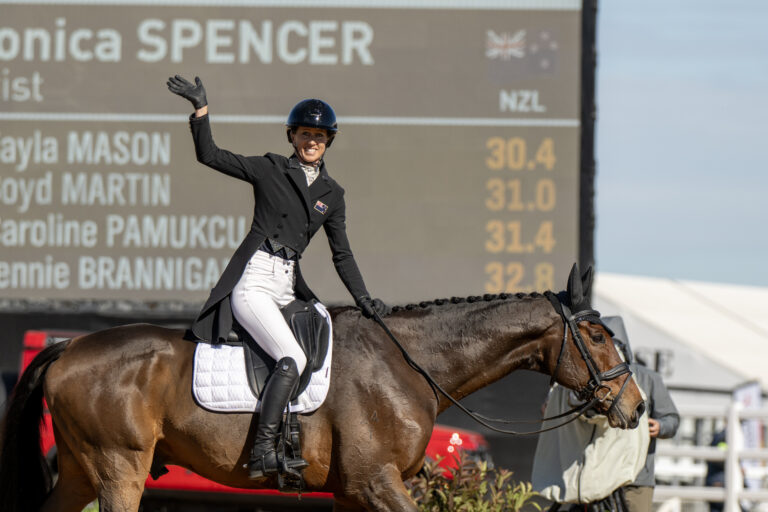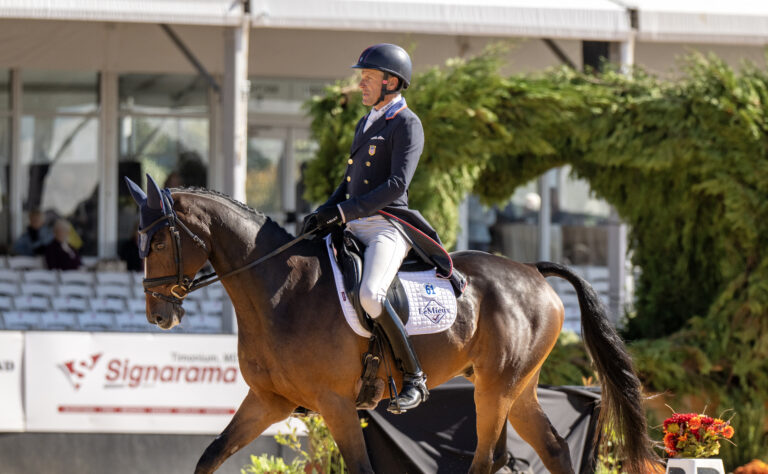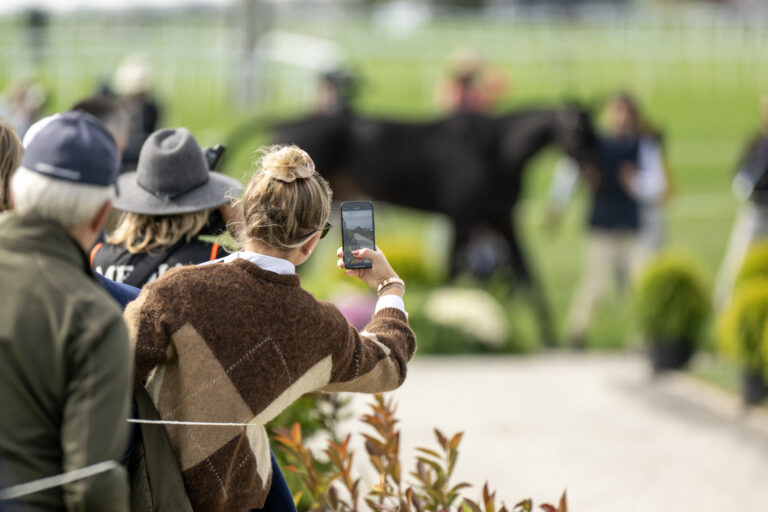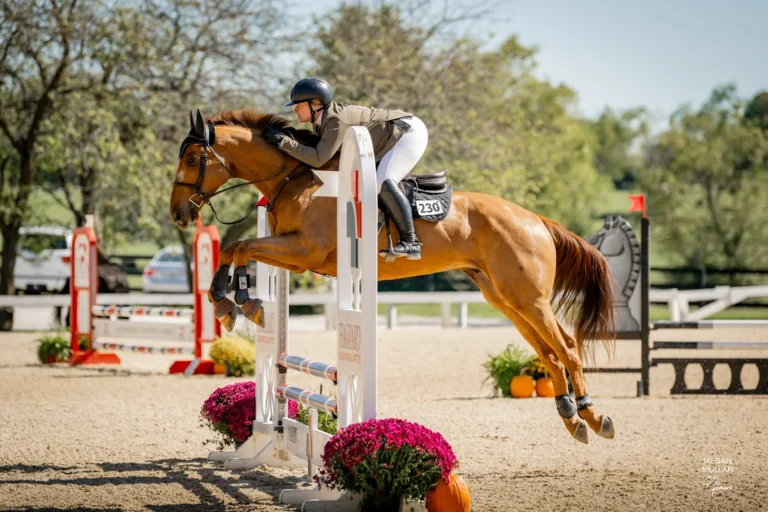As the host country, the United States had an unusual opportunity to bring 10 athletes to this year’s 2010 Alltech FEI World Equestrian Games, the first in which para-equestrian dressage was included in the same event as able-bodied sports.

Becca Hart and Nortessa compete in Grade II Para-Dressage at the 2010 Alltech FEI World Equestrian Games in Lexington, Ky. | ? Amy Katherine Dragoo
For this growing sport, that was both a blessing and a curse–a blessing in that we were able to give so many of our riders experience in international competition, and a curse in that the world championships is not the place where, as a chef d’?quipe, you want your riders seeing an international field for the first time.
Our team was composed of two Paralympic veterans (Becca Hart and Robin Brueckmann) and eight riders who have never ridden their own horses against Great Britain, Germany and the other European countries that dominate the sport. WEG gave our athletes and their coaches a chance to see, first-hand, just how competitive the sport is internationally and the quality of horses being ridden by the winning Europeans. This should give everyone a better feel for where the bar is and what riders need to be working on day-to-day to continue improving as we look ahead to the London Paralympics in 2012.
Competitively, we finished seventh out of 16 teams and narrowly missed an individual medal. Grade Ia rider Laura Goldman, one of our rookies, finished third in the team test and fourth in the individual test aboard Carlingford J.D., owned by Trudy Phillips. Overall, I was pleased our riders worked hard and largely were able to improve their scores as the competition progressed.
More broadly, this WEG was one to remember because of the integration of para-equestrian. It was an honor to be included as part of the able-bodied competition, and we had exposure in the United States that should help build the sport in America. It was great for our athletes to be able to cheer for Ravel, watch Moorlands Totilas up close and check out the reining. (Speaking of reining, the American reiners jumped on our golf-cart brigade to make the trip around the arena during the opening ceremonies, already hopped up on their fabulous first-day performance, waving and cheering like crazy–a memorable experience for our dressage riders!)
In the negative column, there were several organizational frustrations: The arena was built 4 meters too long for the first day of the Freestyle competition, leaving riders “chasing” their carefully choreographed music. Scoring discrepancies among the five judges were a problem throughout the week–many tests had spreads of 5 percentage points or more, and daily we’d see scores with double-digit ranges, from 48 percent to 62 percent, or 63 percent to 75 percent, for example. The scoring affected every team and made it difficult to get a clear picture of what the panel wanted to see in the tests.
Looking ahead, we’ve got a growing number of para-equestrians training at home for future squads. We typically offer several clinics around the country each year to help those aspiring riders, but to really improve our results, we need to further enhance our rider-development system, something we hope to accomplish through the recent formation of the U.S. Para-Equestrian Association, a national counterpart to organizations like the US Dressage Federation and the US Eventing Association.
A more comprehensive program is needed to develop these riders from local to international levels. Particularly for Grade Ia and Ib riders (generally the most severely disabled — Ia compete in walk-only tests), there’s really no middle step now between riding at a therapeutic center and competing internationally. That would be like asking an eventer to jump from Novice level to Advanced, where they’d suddenly find themselves face to face with performance expectations, horsepower, rules and logistics they’d never experienced before. We want to improve aspiring para-equestrians’ access to suitable mounts and dressage training, and introduce them to competitive riding as they develop. By the time a competitor reaches the international level, her job is to buckle down and work, without requiring hand-holding through the competition. But we can’t expect that until we know we’ve got a system in place that fully prepares them to get there.
Our country is too big and our funding too small to use talent scouts the way Great Britain has so successfully, scouring therapeutic centers across the country to find promising riders, then putting them into a funded program where they have access to top horses and instruction. In lieu of that, we hope to develop a system that will help match promising riders and suitable horses, develop a nationwide list of para-equestrian trainers that riders can reference to find dressage instruction and host workshops for riders and their local trainers so they know what to expect in this sport.
This year, we had four Grade IV riders (generally the least disabled athletes, who ride tests equivalent to Third Level) and two riders each at Grades III, II and Ia, but no Ib riders. To win team medals, we need to cultivate riders at all levels–particularly Grades Ia, Ib and II, one of which is required on any team–so we have options for fielding a well-rounded team with strong contenders in every grade. In the next two years, we’ll work to improve horse-rider combinations with the goal of sending the strongest five riders we have to the London Paralympics in four years.
Missy Ransehousen is chef d’?quipe of the U.S. Para-Equestrian Team, a position she has held since 2000.
See photos from 2010 WEG Para-Dressage
More WEG Para-Dressage news
Great Britain and Germany Share Gold in Para-Dresage Freestyle at WEG 2010 Selection Trials
Individual Para-Dressage Riders Compete at WEG 2010
U.S. Para-Dressage Team in Tenth Place
KER To Sponsor U.S. Para-Dressage Team at WEG 2010
U.S. Para-Dressage Riders Named for WEG 2010
See more coverage of the 2010 Alltech FEI World Equestrian Games in the December 2010 issue of Practical Horseman magazine.








